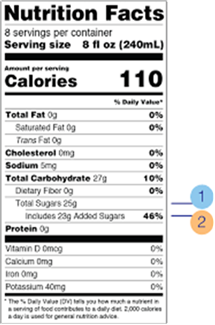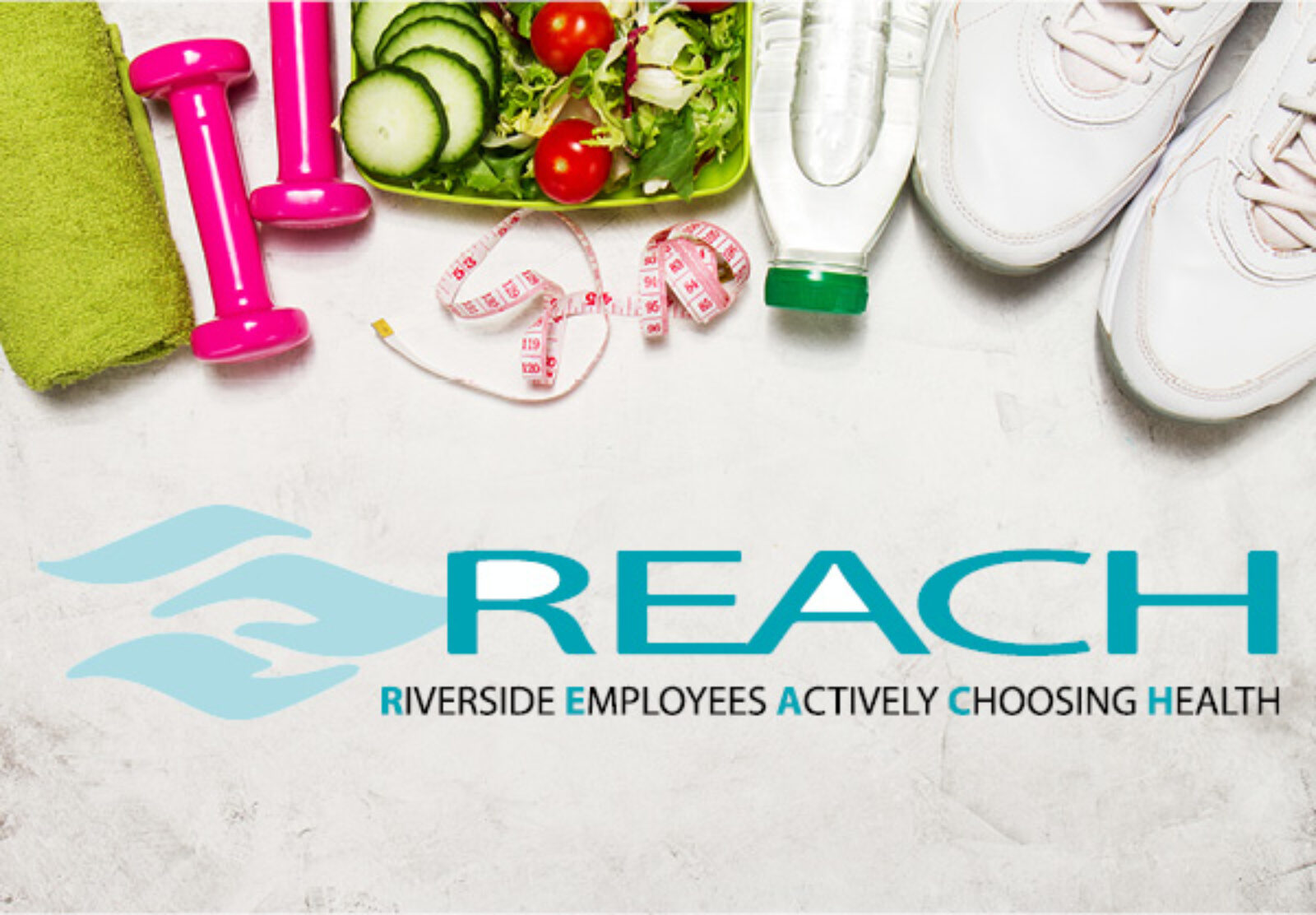REACH March Wellness Matters Bulletin

Hi, I’m Emily LaVoie, a personal trainer at Riverside Health Fitness Center and also a Certified Eating Psychology Coach. Happy National Nutrition Month!
Most articles on nutrition talk about how the foods that we eat can impact our health. Nutrition information often elevates certain types of foods, labeling them as “good” or healthy, while demonizing other types of foods, labeling them as “bad” or unhealthy. These “good” and “bad” labels are usually based on the foods nutrient content.
In this article, I will not be talking about the nutrient content of food, nor give you a bunch of food rules to try to follow or encourage you to adopt new eating habits. Instead, I’m going to switch gears and talk about HUNGER.
Did you know there are four different types of hunger? Most people are aware of physical hunger, but there are more ways we experience hunger than just physically. I will explore the four different types of hunger – physical, emotional, taste, and practical – and how to respond to each.
Physical Hunger
Physical hunger comes from the need for energy from food. Just like when our mouth feels dry, it’s a signal that we need to hydrate or when our bladder stretches, it signals the need to use the bathroom; when we feel physical hunger, it means we need to eat. Normally, we feel physical hunger in our stomach as an empty or gnawing sensation, but we can also experience physical hunger outside of the stomach as shakiness, trouble concentrating, fatigue, headache, anxiety, or just thinking about food more. Eating is the only way to take care of physical hunger.
Emotional Hunger
Emotional hunger is when you experience strong feelings or have an unmet emotional need that presents itself as a desire to eat food. It can be hard to distinguish physical hunger from emotional hunger. Some ways to help tell if it’s emotional hunger: it comes on quick and in conjunction with an intense emotion, you may have recently eaten, or feel the need for comfort, security, or distraction more than the need for energy. The graph below is also a good tool.
| Emotional Hunger | Physical Hunger |
|---|---|
| I currently feel uncomfortable or intense emotions. | It comes on slowly. |
| It comes on quickly. | It’s been a few hours since I last ate. |
| I ate within the last hour or so. | The desire for food is less specific. |
| I am hungry for something specific. | I feel the need for energy. |
| I feel the need for security or comfort. | I feel it in my stomach, or feel tired, shaky, or empty. |
| I feel it in my head. |
Taste Hunger
Taste hunger happens when you have a taste for a specific food. Taste hunger can occur along with physical hunger or in the absence of physical hunger. Basically, taste hunger is when a food just sounds good. Here are some examples of taste hunger 1) You’ve already had two slices of pizza, you’re no longer physically hungry but it tastes so good that you’re not ready to stop eating it yet so you go ahead and have a third slice; 2) You just finished eating a completely satisfying meal out at a restaurant, you are no longer physically hungry but when you see the dessert menu you go ahead and order one, just because it sounds so good.
Practical Hunger
Practical Hunger is not necessarily hunger per say, but rather a need to eat in response to anticipated physical hunger that you won’t be able to satisfy. Often times it has to do with your schedule. An example would be eating during a designated break, even if you’re not physically hungry, simply because you know it will be several hours before you would get the chance to eat again.
Eating is an appropriate response to all four different types of hunger. Diet culture conditions us to believe that emotional hunger and taste hunger aren’t real, but emotional hunger and taste hunger are just as real as physical hunger and are valid reasons to eat.
That being said, it’s helpful to acknowledge which type of hunger(s) you are experiencing, as it will give you helpful information so you know how to satisfy it. For example, you might experience significant physical hunger, along with taste hunger for cookies. Cookies are delicious but not very filling so an idea would be to try having a satisfying meal or snack paired cookies for dessert. If you are experiencing emotional hunger, you could choose to satisfy it with food, or decide if you would like to select another coping mechanism from your self-care toolbox.
Employee Wellness Department Key Dates
- National Nutrition Month
- Colorectal Cancer Awareness Month
- REACH Level 1 Deadline: Aug. 31
- Contact the Employee Wellness Department to schedule a Wellness Wagon visit to your department
- Don’t forget to visit the new lavender room which is located in the Room of Magic 3rd floor (door code 8507)
The Choose to Lose Challenge
To complete this challenge, log your weight at least once a week for all eight weeks. The challenge ends on April 11.
Challenge completion earns you 25 Healthy Habit Points.
Please Note: Only those who registered can participate in the challenge.
REACH Portal Spotlight
Healthy Habit Points can be added throughout the year, by self-reporting under the Healthy Habits Tab for your preventative screenings/ lifestyle coaching/financial, social, or mental wellness. You can also gain Healthy Habit Points by taking courses or connecting a fitness device automatically! A total of 120 Healthy Habit Points is required for Level 3 on Dec. 15, 2021.
Sugar Shocker: Reducing Added Sugar National Nutrition Month 2021

What are Added Sugars?
Like it sounds, added sugars are sugars and syrups added to food during processing. These items are added by manufacturers in products such as soda, cereals, candies, cookies, condiments, and yogurts. Some foods have sugars naturally such as fruits, vegetables, and milk. The sugar in these foods are not added sugars.
Consuming foods and beverages with added sugar can make it difficult to follow a healthy eating plan without eating excessive calories. Consuming added sugar contribute to calorie intake however you are not receiving any nutritional value. What Foods Have Added Sugars?
There are numerous foods that have added sugars such as: beverages such as regular sodas, sweet tea, and energy and sports drinks, candy, cakes, cookies, and brownies, pies and ice cream, sweet rolls, pantries, and doughnuts.
It’s All in the Label
The U.S. Dietary Guidelines for 2020-2025 recommend limiting added sugar to less than ten percent of total daily calories, which translates to less than 50 grams a day on a 2000 calorie diet. The American Heart Association recommends no more than 36 grams per day of added sugars for men and 25 grams for women.
As of 2016, new nutrition facts labels were introduced with some obvious changes including added sugars. The nutrition facts label now includes added sugars in the nutrient list under Total Carbohydrate. Find Total Carbohydrate on the label, added sugars will be listed under Total Sugars (1). The percentage of added sugar, listed along the right margin (2), indicates the percentage of added sugar based on a 2000 calorie diet. Five percent or less of a nutrient is considered a low source of that nutrient. Twenty percent of higher is considered a high source of that nutrient. The label on the right indicates 46%. That’s 46% of 50 grams, the amount that is 10% or less of a 2000 calorie diet.
Added sugars come in all different forms and a variety of names including: corn syrup, maltose, lactose, brown sugar, high fructose corn syrup, sucrose, dextrose, molasses, syrup, honey and malt syrup. Look for the ingredients for these common names for added sugars. The higher on the ingredient list, the more added sugar is in the product. Added sugars are also hidden in products such as breads, pizza, condiments and cereals
Health Snacks Without the Sugar Guilt!
Looking to satisfy your sweet tooth without all of the added sugar? Don’t worry, it’s NOT as difficult as you may think! Try incorporating these ideas and you will quickly see how healthy snacking can be “Oh So Sweet!”
- Try pairing a naturally sweet fruit with a savory nut or nut butter. Spread almond butter on a Gala apple or make your simple and portable trail mix by combining raisins with cashews for a perfect mid-morning snack to hold off hunger until lunchtime.
- Try Greek yogurt with antioxidant – rich raspberries or blueberries. But be wary! Commercial yogurts are be LOADED with added sugar, so be sure to read the Nutrition Facts Panel. Here’s a hint – purchase Greek yogurt and add your berries for a high-protein- cancer fighting snack!
- Try a Smoothie. Experiment with fruits that you are less familiar with such as mangoes, papayas, passion fruit or starfruit. Smoothies are easy to make and provide endless possibilities for different fruit combinations. Add unsweetened vanilla almond milk for extra protein and heart healthy monounsaturated fats.
REACH Level 1 Requirements – 3 step process
In order to complete REACH Level 1 these steps must be completed in order.
- Health Assessment: Located on the REACH Portal (under Rivernet) Once you have completed the Assessment your icon will be green.
- REACH Labs: These labs must be drawn prior to your physician well visit by at least 24 hours but not more than four days in order to meet criteria for a physician visit. Failure to do so may require you to get your labs redrawn. These labs can be drawn at Pavilion Outpatient Center, Coal City, Bourbonnais Campus, Watseka, and Workforce Health.
- REACH Well Visit: For those employees who have Riverside primary care physicians, your physician’s office will have the REACH Well Visit Form. Employees can also download this form from the REACH Portal.

Join us in lending a helping hand to our community at Riverside SERVE Days at Center of Hope Food Pantry on March 22-24. Sign yourself up or, better yet, recruit your work team and Riverside friends to serve together. You earn a free t-shirt and 25 REACH points for participating.
Do You Want to be a REACH Wellness Champion?
Champions meet every third Wednesday of each month to discuss the REACH Wellness Program.
Apply today! Selected champions will earn a free one-year membership to RHFC. Applications are available on the resources page of the REACH portal.
Please return your completed application to the Employee Wellness Office or email to Lynn Christian([email protected]) or Megan Byarley ([email protected])


